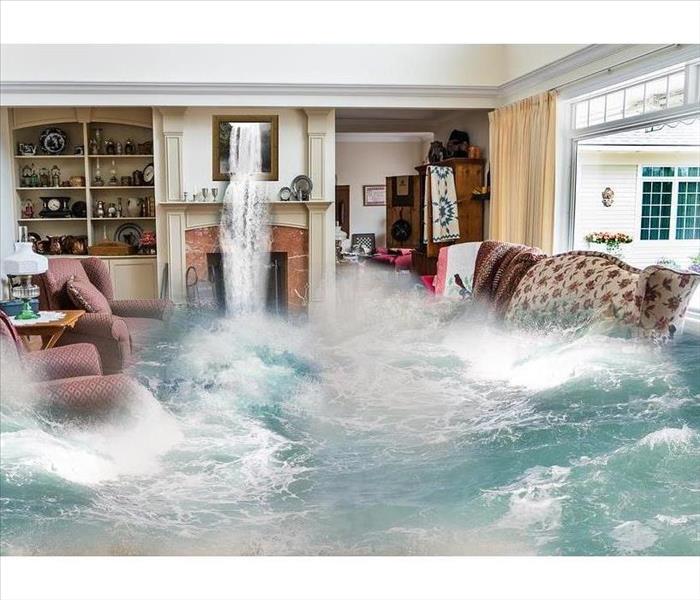5 Tips to Help Your Home Stand Up to a Flood
8/8/2018 (Permalink)
- Close foundation cracks with mortar and masonry caulk or hydraulic cement, which expands and fills gaps completely and costs only a few dollars. Don’t patch solely with mortar or cement, which may crack again. If water is a recurring problem, be sure to investigate other solutions for issues like wet basements.
- Invest in a battery-powered sump pump. Sump pumps let you pump water out of your home and can be an excellent defense against flooding — unless they’re powered by electricity and the power is out. Battery-powered sump pumps are a relatively inexpensive ($150-$400) solution.
- Move expensive items to a safer location. If you have a second floor or an attic, moving furniture, photographs, and artwork to a higher level will protect your possessions in all but the most severe floods. Elevate furnaces and water pumps when they’re installed, if possible, to a height of 12 inches above the highest known flood level for your area, suggests FEMA.
- Anchor your fuel tanks. Unanchored tanks can float, rupture, and release fuel. Once the power sources of system units like furnaces and water heaters are disabled and the units cooled, you can also wrap them in waterproof tarps to mitigate water damage.
- Install sewer or septic line check valves. They allow waste to flow only one way. Plan to spend $100 or more per valve to have a pro install them or do it yourself for $10-$15 each to ensure sewage can’t back up into the standing water in your home. Install at a point in the pipe that’s easy to access for repair.
Source: www.houselogic.com






 24/7 Emergency Service
24/7 Emergency Service